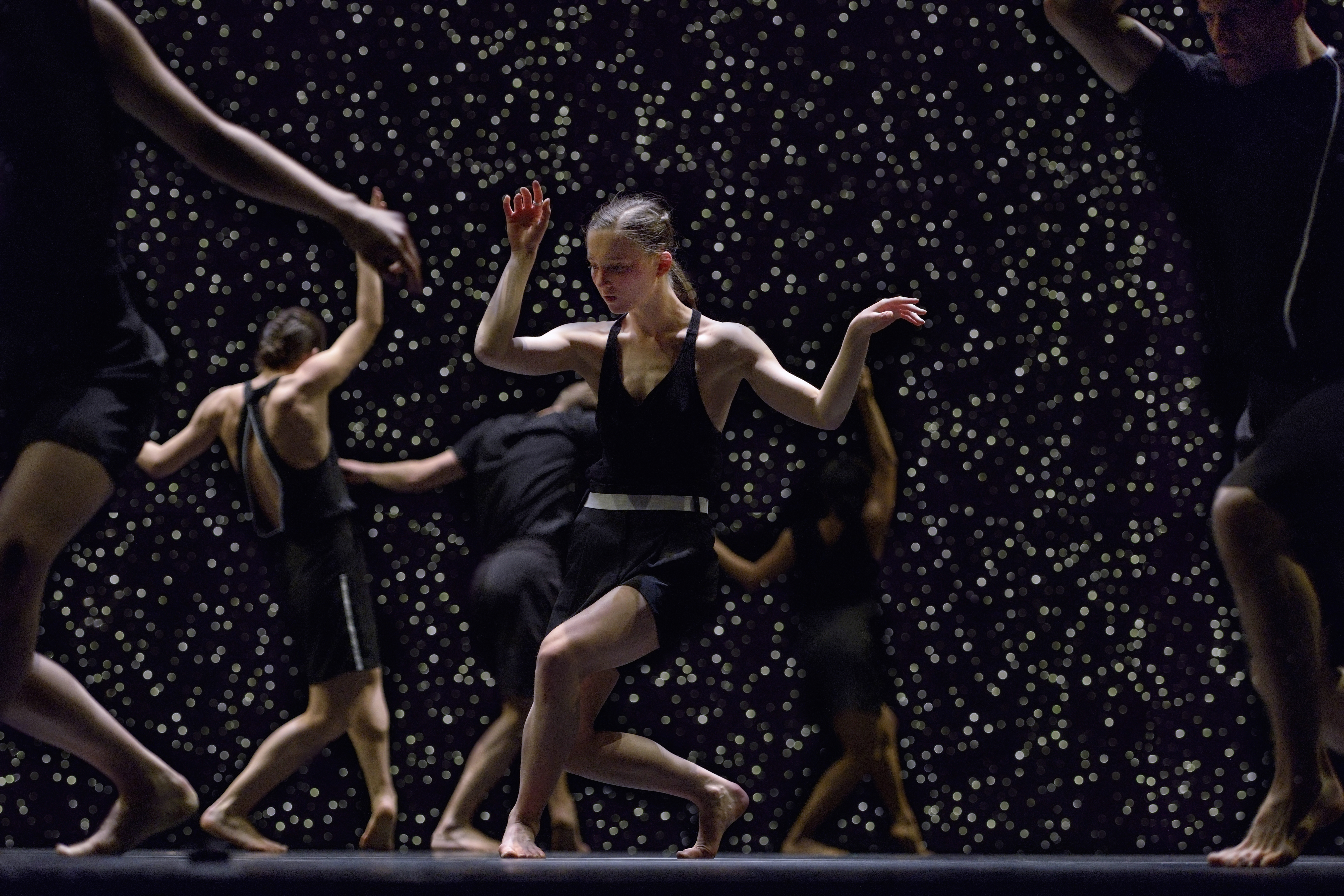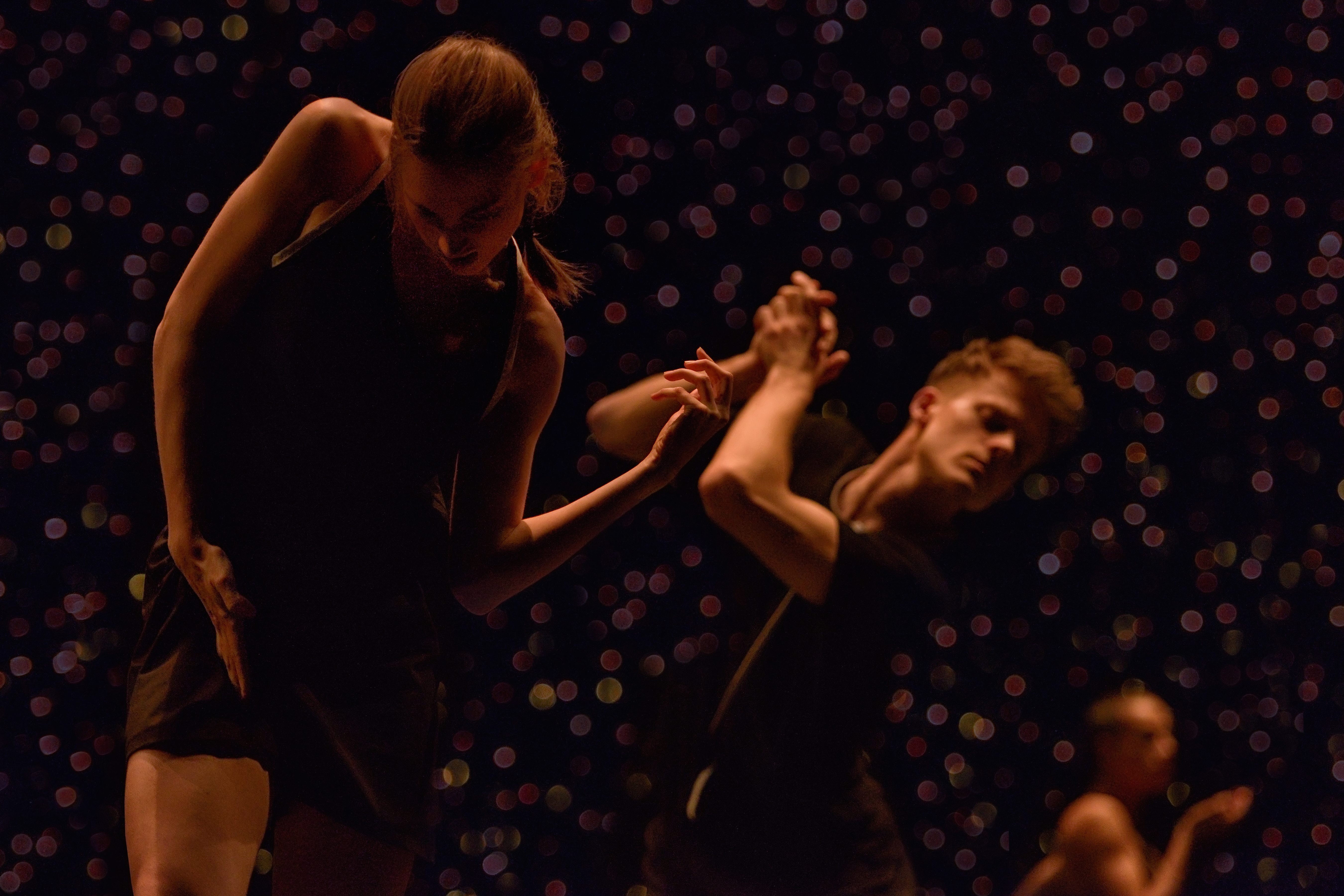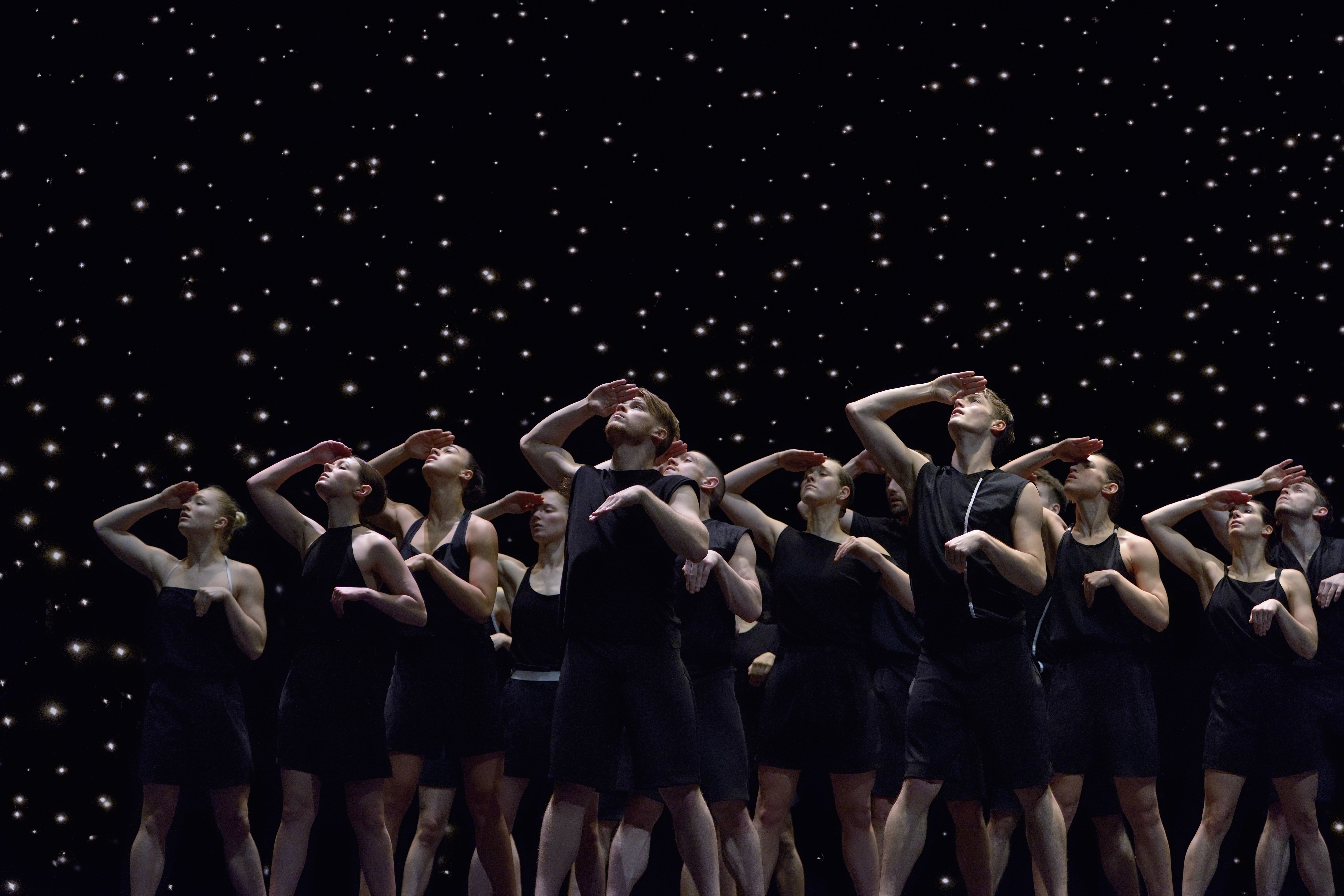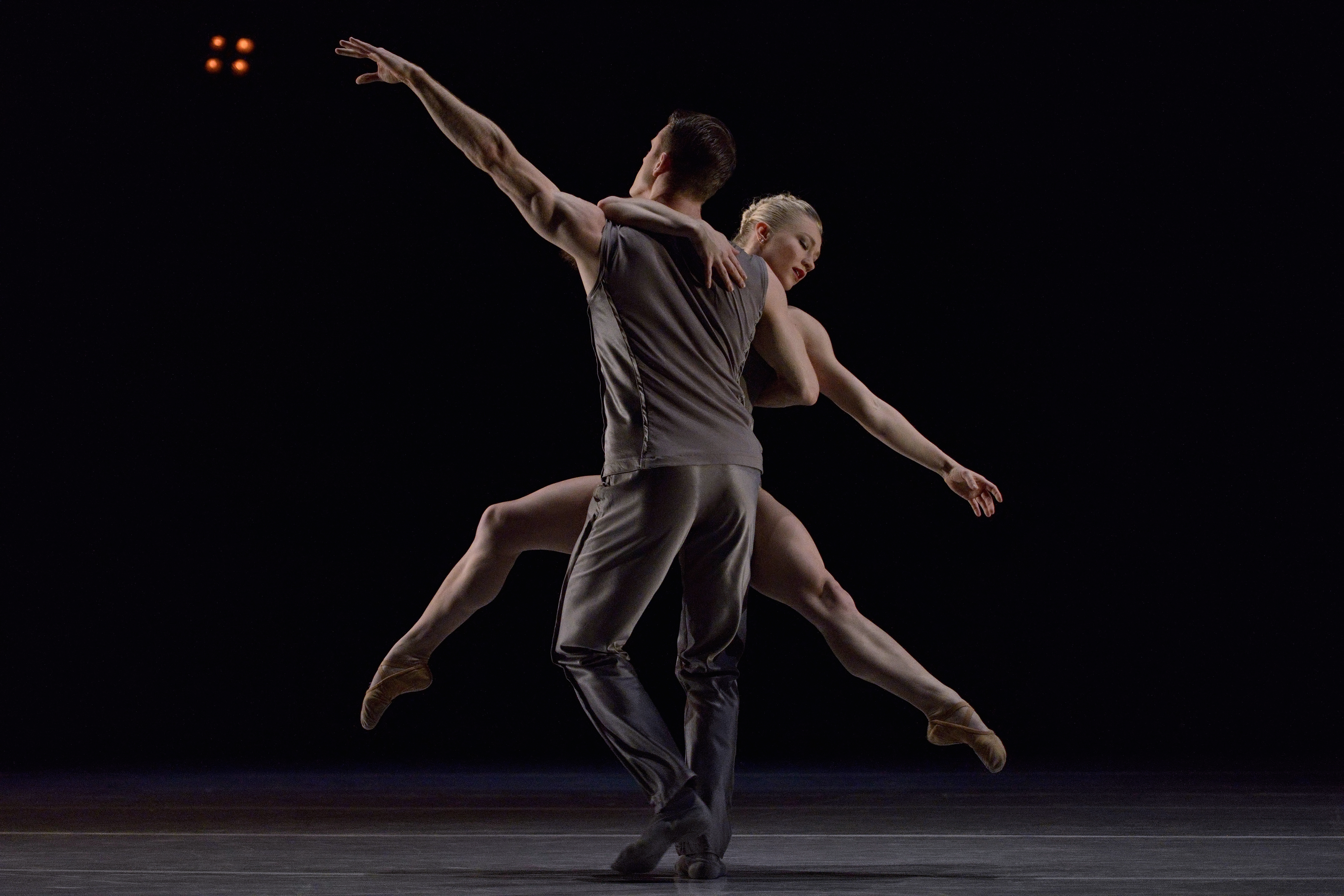
Ballet BC’s “Program 2”, features three pieces from internationally renowned choreographers, Jorma Elo, Adi Salant, and Crystal Pite. It is a nicely balanced program, contrasting classical prowess with conceptual richness. If there is a commonality between themes investigated, it is that they are all, in some way interested in fundamental aspects of the human condition and the relationship between individual and collective experience.

1st Flash
We’re not given much in way of a conceptual rationale for the first piece of the night, other than the title, “1st Flash” and choreographer, Jorma Elo’s clear passion for Sibelius’s music. Elo likened hearing Sibelius’s violin concerto to his first rock concert experience. Which, from my own experience, would translate to that moment of being utterly captivated by another’s creation, of heightened clarity and complete immersion in a collective experience. “1st Flash” seems to take this further. It conjures the energy and the constructive frenzy that follow a flash of inspiration or epiphany, whether that be from a song, a piece of art, or a conversation. The dancers share a moment of rapturous inspiration provoked by Sibelius’s rousing violin concerto. There’s a palpable energy and focused flow. It’s powerful, poised, and joyful. Elo uses moments of silence, to heighten our awareness to the exhilaration of sound and movement. The lighting design echos the use of contrast to lend emphasis to activity, at times dazzling the senses with intense floodlights, and at others dusting the dancers with a soft light, dissolving their outline in hazy sfumato. As is typical with Elo’s work, the piece is contemporary yet rooted in classical dance techniques, which showcase the dancer’s abilities exquisitely.

Which/One
Second on the billing was a world premiere for choreographer Adi Salant, and boy did it shimmer with a sinister razzmatazz.
A piece in two parts, it opens as if we’ve wandered into a casting audition for the next big Broadway production, a disembodied voice barks instructions to nervous hopefuls, who are gradually segregated into small groups based on some indeterminable criteria. The audio is taken from the movie, “A Chorus Line”, where a director is auditioning dancers for a large production. The movement we see is, at turns, both comic and tragic. Jazzy gestures and pouty poses abound as the dancers vie for position to curry favour from the omnipotent voice. Cracks in plastered-on smiles show grimaces of desperation. Surrounding the dancers are walls of shimmering lights, the glitz of the show has them corralled. Although jostled in a crowd, the dancers seem utterly alone, isolated in their competition with one another.
The second part of the piece is set to an ethereal soundscape. Although the dancers now seem to have a relationship with one another, it is a fraught one. They cling on to each other and ineffectually communicate with erratic head and arm gestures. Although they crowd together, they remain disconnected, some oscillate with frantic gesticulations, others stand motionless. It seems that these are the repercussions of striving for one’s personal success. To me, the agenda was – what effect the quest to be liked has on one’s own psyche, and on those around us. Salant makes a comparison between the audition experience and everyday life. We are left pondering the repercussions of constantly putting on a show in order to be liked or accepted.

Solo Echo
Crystal Pite’s “Solo Echo” returns to Ballet BC to complete the evening’s program. A deeply allegorical piece, it investigates the different pressures commonly felt through a lifetime. In the first instance, it is filled with tumult and passion. The inner conflict that comes from needing to both repel and cling on to the security and comforts of youth. The piece progresses to deal with loss and eventually acceptance of loss. There is stunning group work, as all the dancers on stage coagulate into a single form, energy rippling through the clump, until in a moment of elastic limit the bonds are broken and the dancers splinter. The staging too, cannot go without commendation. A diaphanous curtain of illuminated confetti rains down to the rear of the stage. The last scene – a lone, crumpled body lies on stage, gradually accumulating his snowy shroud. Mesmerizing.
– MG
